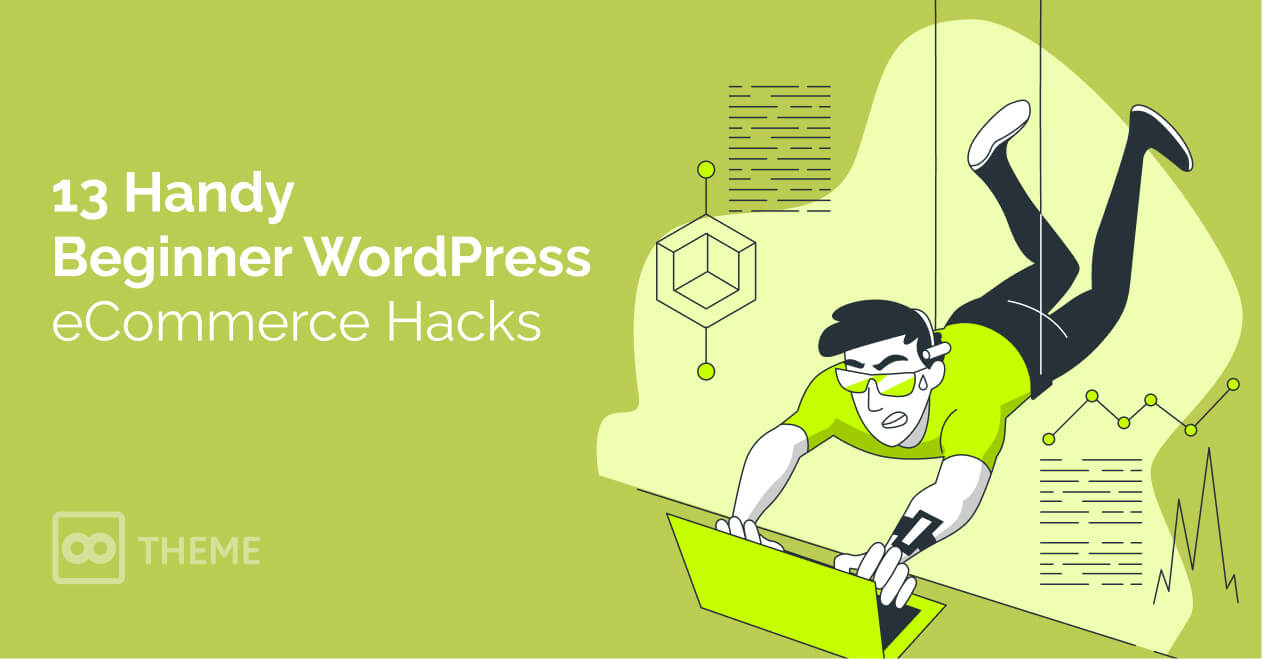
If you're launching an online store and feel overwhelmed, here are some super-handy beginner WordPress eCommerce hacks.
It doesn’t have to be.
Whether you’re setting up your first eCommerce site or looking to optimize what you’ve already built, these hacks can make a big difference in how smoothly everything runs.
And when it comes to online shopping, everything needs to be smooth.
Small tweaks can improve loading times, conversions, and customers' overall experience.
We'll guide you through multiple tips to help you get the most out of your WordPress store.
From choosing the right theme to optimizing your product images, these tricks are easy to implement - even if you’re not a tech expert.
We’ll also discuss important features like guest checkout, mobile optimization, and ensuring your site’s navigation is crystal clear.
In the end, you'll have some of the must-knows to create a more professional online store that shoppers will enjoy coming back to.
Now, let’s break it down into simple, actionable steps to transform a "just okay" store into a thriving one.
The theme you choose for your WordPress eCommerce site is super important.
It’s the foundation of your store's appearance and, more importantly, its performance.
A good theme needs to look sleek and professional and be lightweight to ensure your site loads quickly.
Speed is crucial because no one likes waiting around for product pages to load, especially potential customers, who could easily click away if things feel sluggish.
That’s why we recommend our very own XStore, a lightweight, eCommerce-optimized theme designed to deliver both style and speed.
It’s packed with features specifically made for online stores but without the bloat that slows things down.
With XStore, you’ll get a fast, beautiful, functional site - giving your customers a seamless experience, from browsing products to checkout.
We all want that, right?
Remember, a quick-loading site doesn’t just improve user experience - it also boosts your SEO and conversions.
And XStore hits the sweet spot between aesthetics and performance.
Product images are one of the most important parts of your eCommerce store.
They help showcase your items and give customers a feel for what they're buying.
But if those images are too large, they can seriously slow down your site - and that’s bad news.
Slow-loading pages can frustrate visitors and drive them away before they even get a chance to explore your products.
The good news? You don’t have to sacrifice image quality for speed.
Using plugins like Smush or Imagify is a simple way to (automatically) compress your images without losing that crisp, professional look.
A quick tip: upload your images in the right dimensions to avoid unnecessary scaling.
And always use JPEGs for photos and PNGs for graphics with transparent backgrounds - this keeps file sizes smaller.
Note: Before we continue, our XStore theme comes with preinstalled WooCommerce.
If you’re setting up an online store with WordPress, WooCommerce is the go-to option for a reason.
It’s super beginner-friendly, flexible, and completely free to start with.
Whether you’re selling physical products, digital downloads, or services, WooCommerce has everything you need to get your store up and running quickly without experience.
Here’s how easy it is to install and set up:
WooCommerce’s standout feature is its flexibility.
You can sell practically anything, customize product pages, manage inventory, and even add advanced features like subscriptions or memberships with free or premium extensions.
Plus, it integrates with pretty much all the major payment gateways - PayPal, Stripe, etc.
WooCommerce is perfect for beginners and what's best, it grows with you as your store scales.
Further reading: A complete guide to customizing Woocommerce
Let’s be real - no one enjoys being forced to create an account before buying something online.
In fact, this is one of the main reasons customers abandon their carts.
I know I did - way more than once!
Enabling guest checkout makes it easier for your customers to complete their purchases without strings attached.
This small change can greatly impact reducing cart abandonment and boosting sales.
Here’s how to enable guest checkout in WooCommerce:
It’s that simple!
Now, customers can complete their purchases without the extra step of creating an account.
However, it’s still a good idea to offer them the option to sign up after checkout or save their details for future purchases.
This gives them flexibility and encourages repeat business without making them feel locked in.
A CDN is like a global server network that stores copies of your website’s content.
When someone visits your site, the CDN delivers it from the server closest to them, making everything load quicker.
This is especially important for eCommerce sites where every second counts - customers won’t stick around if things are lagging.
A great, beginner-friendly option is Cloudflare.
It’s easy to set up, and the basic plan is free.
Plus, it doesn’t just speed up your site - it also adds an extra layer of security by blocking malicious traffic.
Here’s how to integrate Cloudflare with WordPress:
After setting it up, Cloudflare will automatically optimize your site’s loading times for visitors around the globe.
If customers don’t feel secure making a purchase, they’ll likely click away before they even hit checkout.
One cool trick to boost your online store's trustworthiness is trust badges.
Yes, those little icons or seals that show your site is secure, your payment methods are reliable, and your store is legit.
They work wonders by giving customers peace of mind, which can make all the difference in whether they decide to buy or not.
Badges like SSL certificates (for site security), payment processor logos (like PayPal or Visa), and even customer review badges can help build trust.
The best places to display these are on your checkout pages (where trust is most critical), as well as product pages and footer sections.
You can add these badges easily with plugins like YITH WooCommerce Badge Management or TrustPulse.
You can even customize the design to match your store’s branding!
Display trust elements in strategic spots and tell your customers, "Hey, it’s safe to shop here."
Social proof is everything when it comes to online shopping.
How many times did you purchase something without reading a few reviews first? Yeah, I thought so.
Seeing other customers rave about a product (or share their honest opinions) builds trust and helps potential buyers feel confident in their purchase.
This is why product reviews are such a game-changer for eCommerce.
To enable customer reviews in WooCommerce, it’s pretty straightforward:
Managing reviews is key to keeping things smooth. But you’ll want to moderate them to prevent spam.
Still, don’t be afraid of honest feedback - it shows you’re transparent and open to improvement.
Finally, you can also add features like photo reviews, upvoting and even "verified buyer" badges.
Do whatever it takes to help potential customers click the "buy now" button confidently.
In today’s world, mobile shopping is huge.
Note: If your eCommerce website doesn't support mobile devices, you can forget about any level of success. Period.
A site optimized for mobile makes shopping easy—there's no frustrating zooming or pinching to navigate tiny buttons.
To see how your site measures up, try using Google’s Mobile-Friendly Test.
Just enter your website URL, which will tell you how well your site performs on mobile devices.
If things need fixing, you’ll get helpful points on what to improve.
Remember that using a top-notch WordPress theme like XStore helps with responsiveness - because it's mobile-ready by default.
When it comes to online shopping, simple navigation is key.
If customers can’t easily find what they’re looking for, they’ll bounce from your site faster than you can say "cart abandonment."
Here are some tips for structuring your menus and categories:
Best practices?
Ensure your navigation is consistent across all pages, use clear labels that everyone understands, and test it yourself - navigate your store as if you’re a customer.
If it’s easy for you, it’ll be easy for them too.
Free shipping has a huge psychological impact on buyers - just seeing "free shipping" can be enough to push them to hit that "Buy Now" button.
In fact, many customers will abandon their cart the moment they see high shipping costs.
Offering free shipping can significantly reduce that risk, boosting your sales and keeping customers happy.
The good news is that you can offer free shipping without losing profit. One great way to do this is to set a minimum spend threshold.
For example, you could offer free shipping on orders over $50. This encourages customers to add more to their cart to reach the limit, increasing their average order value.
You can also offer free shipping for specific products or regions.
Here’s how to set up free shipping in WooCommerce:
By strategically offering free shipping, you not only please your customers but also drive more sales without cutting into your profits (too much).
Win-win!
Imagine spending hours building your eCommerce store, adding products, perfecting the design - only to lose it all because of a server crash or a random issue.
Sounds like a nightmare, right?
That’s why backups are essential.
Even if something goes wrong, you can easily restore your site without missing a beat.
Luckily, automating backups is a breeze with plugins like UpdraftPlus.
This tool handles everything for you.
You won’t have to remember to back things up manually - UpdraftPlus takes care of it on autopilot.
Here’s a quick guide to setting up automated backups with UpdraftPlus:
Focus on growing your story without ever again facing the horror of losing content - or your entire online store!
When running an online store, you want to know what's working and what's not.
That’s where Google Analytics comes in.
Tracking eCommerce data helps you better understand your customers, determine what’s driving sales, and identify areas for improvement.
To make integrating Google Analytics a breeze, we recommend using the MonsterInsights plugin.
It lets you set up Google Analytics on your WordPress site without any complicated coding. Plus, it gives you easy-to-read reports right from your WordPress dashboard.
Here’s how to get started:
Some key metrics to keep an eye on include conversion rates, traffic sources and average order value. But you can track so much more with Google Analytics!
By monitoring these metrics, you can make smarter decisions and confidently grow your store.
If the checkout process is too long or complicated, customers might bail before completing their purchase.
To avoid drop-offs, it’s crucial to speed up your checkout and make it as smooth and simple as possible.
Here are some quick tips:
Another excellent strategy for a fast checkout is a one-page checkout.
Speeding up your checkout creates a frictionless experience for your customers - keeping them happy, reducing abandoned carts, and boosting your sales.
Get the ball rolling strong with these beginner WordPress eCommerce hacks.
And what's best?
You don't have to be an experienced eCommerce user to make them work for you. Anyone can benefit from them!
In eCommerce, it’s often the small, simple tweaks that make the biggest difference.
By optimizing your site’s speed, simplifying navigation, streamlining checkout, and focusing on user experience, you can drastically improve how your WordPress store performs - and keep customers coming back for more.
What's important to know is this: you don't need to tackle everything at once.
Start with a few of these hacks, like enabling guest checkout or adding trust badges, and go from there.
As you get comfortable, you can build on these changes and continue fine-tuning your store for even better results.

